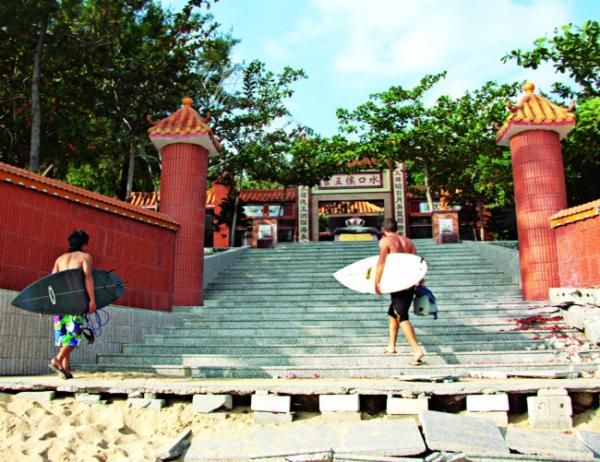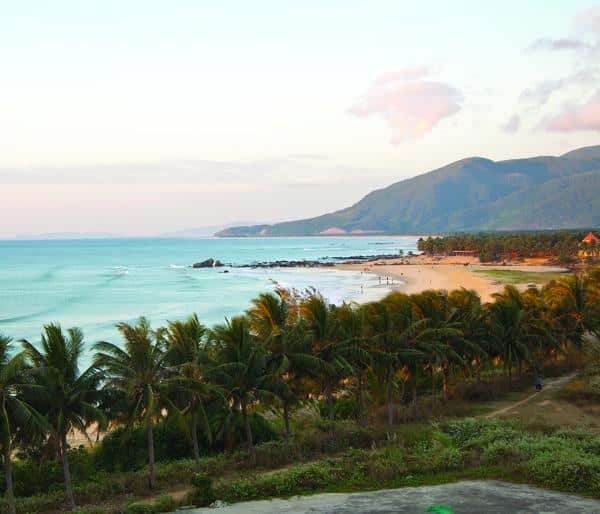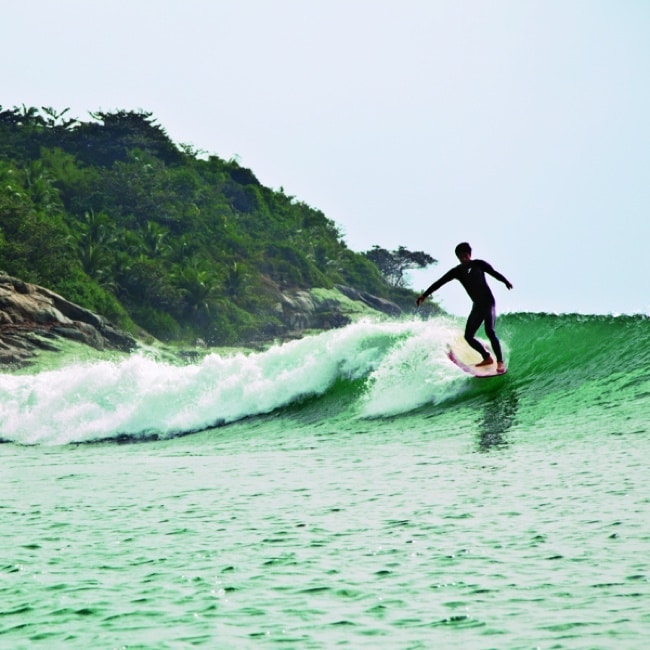China's Hawaii
They're all staring at me. All 60 or so of them, standing in the sand, eyes following my every move. Many of them have cameras trained on me as I carve a few calligraphy strokes on a small wave. As I near the beach, flashes pop. I hear clapping. All of the attention is strange, but I must admit I sort of like it. I'm no pro surfer. Far from it. The reason for the fuss is I'm surfing in China, off Hainan Island. I'm alone, and my fan club appears to be Chinese vacationers from the mainland. They've never seen anyone surf before, which I find ironic. Most surf gear sold in the States is made here in their own country.
As the sun fades below a hill, a chill enters the air, but my fans hold their ground. They're still watching. That was December 2009. Just me and my board, enjoying great waves. But a year after returning home to North Carolina , I heard about sudden changes on Hainan that didn't seem possible. In a country where having a tan denotes a lower social class, where few know how to swim and a surfboard is worth several month's wages, news of surfi ng taking hold here seemed rather absurd. After all, surfing is a solo, self-indulgent sport. Could it ever thrive in a nation where "we" always trumps "me"? And could it spell greater changes in China well beyond the beach? I had to come back to see for myself.

Photo by: Mark Ander
Stepping out of the airport, fresh off my four-hour flight from Beijing, I welcome Hainan's familiar embrace. It's humid. Things in Sanya are how I remembered them. Gaudy high-rises tower over palm-fringed beaches. Streets are alive with taxis and tuk-tuks — racing like bees to flowers, flitting to and from beach bars and restaurants. Over the past decade, Hainan, known as the "Hawaii of China," has become the holiday destination of choice for middle- and upper-class Chinese from the mainland, as well as Russian tourists. Signs are written in both Chinese and Russian.
The two groups make funny beach fellows—pasty white Russians in bikinis and Speedos clomping the sand alongside the often fully clothed Chinese, many holding umbrellas to block the midday sun. "The Chinese don't really have a beach culture," says Brendan Sheridan, a lanky 31-year-old American expat who opened the island's first surf shop, Surfing Hainan, in 2007. We're paddle boarding off Sanya, our strokes slowly parting the glassy water. "I mean, do you see any Chinese people tanning at the beach?" he asks. "No. If you get tan, that means you're poor and work outside." Brendan adds that only recently has China begun to develop a leisure culture. Then there's surfing's cost: A $500 surfboard equates to the salary a waiter may earn in three months of work.

Photo by: Mark Anders
While expats from the United States living in mainland China make up the majority of Surfing Hainan's clientele, Brendan tells me that Hainan locals and Chinese tourists now account for 20 percent of his business. He estimates 20 dedicated local Chinese surfers live in Sanya, up from just a handful three years ago. Another surf shop, run by locals, recently opened next door. Brendan welcomes the competition. His mission to bring surfing to Hainan may be working. It sure seems to be. That afternoon, in the street in front of the surf shops, young Chinese guys wearing surf trunks, T-shirts and sunglasses are practicing skateboard tricks, cleaning wax off surfboards and just hanging out. The waves are building. But what will they bring with them?
